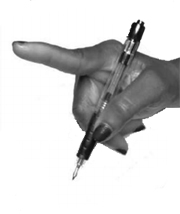Genetics
Mutations in the TOR1A gene (torsin family 1 member A) encoding TorsinA, a member of the AAA+ superfamily (ATPases associated with a variety of cellular activities), are a cause of early-onset generalized dystonia.
The first and so far the only clearly established mutation is a 3-bp deletion in the TOR1A gene, resulting a loss of glutamic acid from the encoded protein (c.904_906delGAG;p.302delGlu).This mutation is frequently found among Ashkenazi Jewish patients due to a founder effect.
The identical mutation has also arisen independently in unrelated individuals from diverse ethnic backgrounds.
Different rare missense and in-frame mutations lack unequivocal confirmation of pathogenicity.
Pathophysiology
TorsinA may play a role in coordinating Endoplasmic Reticulum-associated degradation (ERAD) processes.
Mode of Inheritance
There is variable expressivity ranging from severe childhood-onset generalized to late-onset focal dystonia (including writer’s cramp and dystonic tremor), and about two thirds of the mutation carriers remain unaffected throughout their life (reduced penetrance of about 30%). The condition is autosomal dominant.
Clinical Presentation
DYT-TOR1A dystonia usually presents as dystonia in an extremity in childhood, median age of onset being 9 years2. The symptoms of most often begin in an arm or leg and over the next 5 years, symptoms typically spread to involve additional body parts, including other limbs, trunk, and neck3.
Up to 50% of patients develop generalized involvement. A characteristic pattern of spread is from one leg to another. Bilateral leg (and trunk) involvement may be particularly disabling, rendering patients unable to walk without assistance. Tremor is found frequently, and myoclonus may also be present2.
Typically there is sparing of the face, and neck. Laryngeal dystonia is rare. Note that patients may develop symptoms after the age of 30, and many not have a family history2.
Treatment
Deep brain stimulation has repeatedly shown to be an effective treatment option.

